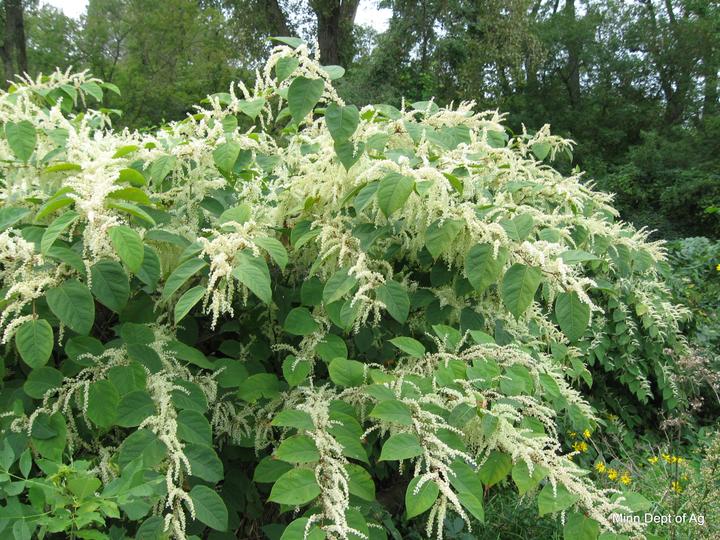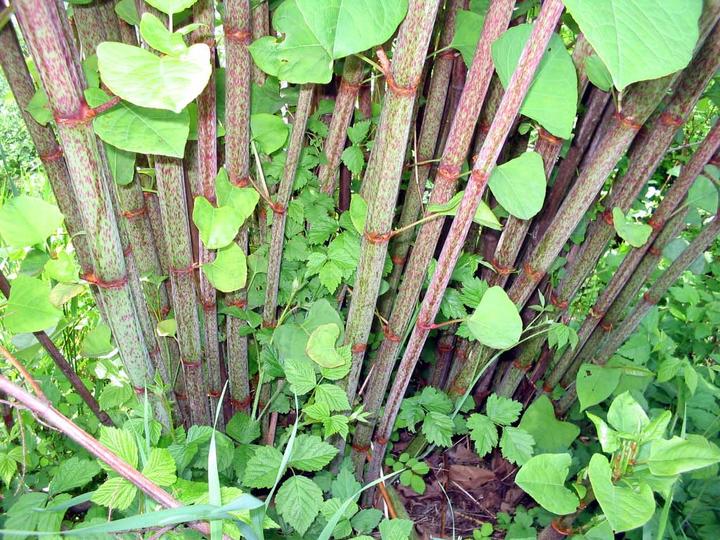Why focus on wild parsnip and Japanese knotweed?
Wild parsnip and Japanese knotweed are highly damaging invasive plants in North America. In addition to degrading natural habitats and crowding out native plants, these plants directly cause for humans. Wild parsnip sap contains a chemical that causes severe skin burns (click for safety information). Japanese knotweed spreads aggressively and can cause damage to property. Because of their pesky impacts, wild parsnip and Japanese knotweed are defined as prohibited noxious weeds in Minnesota and were chosen for this research.
Wild Parsnip
Wild parsnip is a harmful invasive plant in North America. In addition to degrading natural habitats and crowding out native plants, it is a health danger for people. Its sap causes severe skin burns and this toxicity also affects livestock.
Wild parsnip is toxic. Do not break plant tissues. Always wear long sleeves, long pants and gloves that protect the skin from contact with the sap of this plant. (Click for safety information.)
About: Wild parsnip is the same species as the familiar food crop. Therefore, it is important that gardeners prevent parsnip from going to seed. Once naturalized, wild parsnip displaces native plants and degrades habitats.
Description: Wild parsnip grows to 5’ tall and requires full or partial sun. Characteristic of the carrot family, its alternate leaves are pinnately compound. Leaflets are coarsely and irregularly toothed with an overall diamond shape. In the 2nd or 3rd growing season, plants develop hollow, grooved stems. The branched stems support flowers arranged in umbels, with five curled petals, chartreuse-yellow in color. Wild parsnip reproduces by seed, and individual plants die after producing seeds, which are small, broad, oval, slightly ribbed.
See plant profile pages by Minnesota Department of Agriculture, Minnesota Department of Natural Resources, and Minnesota Extension.
Japanese knotweed
Japanese knotweed is a harmful invasive plant in North America. In addition to degrading natural habitats and crowding out native plants, its aggressive growth damages building foundations and hardscaping.
About: Japanese knotweed grows quickly and reproduces vegetatively, meaning that escaped plant fragments (e.g., a piece of root) can grow into clone plants that colonize new areas and form dense leafy thickets. Its stems and rhizomes take advantage of cracks in concrete and other hard materials. This aggressive growth can compromise the integrity of bridges, drains, retaining walls, building foundations, and more.
Description: Japanese knotweed's hollow, bamboo-like stems are green with reddish nodes, become tough and woody with age, and have multiple branches. The leaves are simple, alternate, and measure up to 6 inches long by 4 inches wide. The leaf shape is broadly ovate with a pointed tip and square base. Plants produce flowers in creamy whitish clusters at the upper leaf axils in late August and September and can produce small 3-angled black-brown papery fruit.
See plant profile pages by Minnesota Department of Agriculture, Minnesota Department of Natural Resources, and Minnesota Extension.

